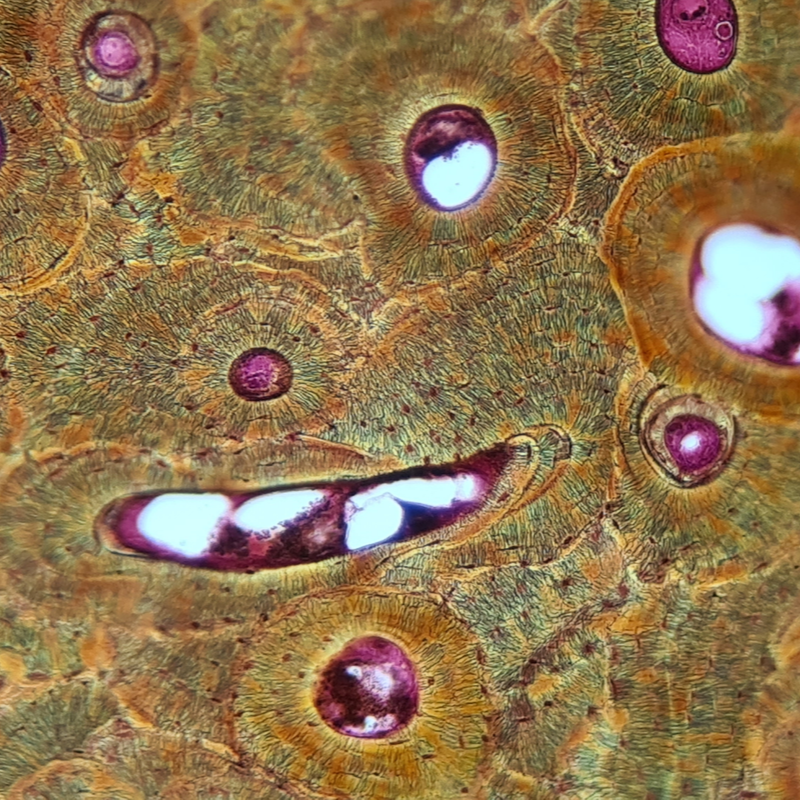
What is enchondromatosis?
Enchondromatosis causes multiple cartilaginous tumours, so-called enchondromas, which form mainly in the middle part of the long bones of the finger and toe limbs (diaphyses of the phalanges). In some cases, enchondromas also appear in the bone ends (metaphyses) of long tubular bones in . Enchondromatosis, which is mainly caused by a genetic mutation, causes growth disorders, fractures, but also malformations. The mutation takes place due to a somatic change. This means that no genetic disposition can be held responsible for the gene mutations so far. Enchondromatosis is therefore not considered by scientists to be a genetic disease.
Enchondromatosis tends to be asymptomatic for a long time and only causes pain or unexplained fractures as the disease progresses . Enchondromatosis is a very rare disease that affects children more often than average.
What causes enchondromatosis?
Although the aetiology of enchondromatosis has not yet been conclusively clarified , the apparent causes of the disease are known to medical experts. In the vast majority of cases, a genetic mutation has been identified. These are changes in the genetic material in the genes IDH1 and IDH2, which stand for isocitrate dehydrogenase 1 and 2. They serve as enzymes and therefore act as catalysts, i.e. as biochemical reaction accelerators.
How can enchondromatosis be prevented?
Since has not yet been able to clarify which factors can be held responsible for the mutations of the IDH1 and IDH2 genes , no preventive measures are yet available.
What symptoms are caused by enchondromatosis?
Enchondromatosis is usually painless, as the growth of the tumours occurs with the child's growth phase. However, enchondromatosis can cause growth impairment which can be accompanied by deformity and/or fractures . Furthermore, chondrosarcomas can develop in about 25 percent of all cases . These are rare and rare forms of chondrosarcoma. These are rare, malignant bone tumours that develop from cartilage tissue. If parents notice growth disorders, deformities or fractures in their child, a doctor should be consulted immediately.
How is enchondromatosis diagnosed?
An enchondromatosis can be diagnosed by the usual imaging procedures . This is usually done with a conventional X-ray. Multiple enchondromas appear in the skeletal image as cystic distensions without marginal celerosis. In addition, calcifications and fractures of the affected parts of the skeleton can be made visible. If malignant degeneration is suspected , a tissue sample (biopsy) is also taken for examination in the laboratory.
How is enchondromatosis treated?
Enchondromatosis is usually only treated with regard to its symptoms (supportive measures). Accordingly, fractures are treated, possible malpositions are surgically corrected and/or the individual tumours are monitored with regard to their possible degeneration. If, for example, there is a deformity, a so-called realignment operation should be carried out in order to avoid incorrect loading, but also subsequent complaints associated with this. Particularly in the case of malpositions, it is possible that several surgical interventions will be necessary. The patient should also undergo physiotherapy afterwards to achieve the desired result.
If pain occurs as a result of the operation, for example due to lesions, short-term medication is also possible. As the patient's immune system is severely affected by this medication, but also by the numerous operations , attention should be paid to a vitamin-rich, healthy diet containing omega-3 fatty acids, as well as sufficient exercise, especially in the fresh air.
Since enchondromatosis causes tumours, the development of these tumours should also be closely monitored in the course of regular check-ups. In this way, possible degeneration can be removed at an early stage .
What is the aftercare like?
After the tumour has been removed, physical rest is advisable. The patient should avoid strenuous activities as well as sporting activities for the time being. . Children should be cared for especially lovingly after the operation in order to support the healing process as best as possible.
What is the prognosis for enchondromatosis and what complications can occur?
The prospects of recovery from enchondromatosis depend on whether the tumours degenerate and at what time they were diagnosed . The earlier the disease causes symptoms, the more severe the course of the disease often is. Although many patients do not necessarily experience pain, the growth disorders and malformations can massively restrict the daily lives of those affected. The quality of life can therefore be reduced by the disease. If deformities have occurred in the skeleton , these can, for example, restrict the movements . However, these movement restrictions can be remedied with the help of physiotherapy. However, since enchondromatosis has genetic causes that cannot be cured, the prognosis for the disease is rather unfavourable. However, it is not necessarily said that enchondromatosis also leads to a reduced life expectancy.
Although deformities can be corrected by means of surgical interventions, complete freedom from symptoms cannot be expected as a result. In addition, due to the natural growth process, several operations are usually necessary in order to optimise the mobility of the skeleton. Each operation involves risks and side effects. Although complications are rather rare , they could lead to a general worsening of the prognosis.
Since the tumours caused by enchondromatosis can constantly form anew, this can lead to psychological and emotional problems, especially in children and adolescents. In the worst case, the patient develops psychological disorders, which further worsen the overall prognosis. To counteract , it is important that children in particular grow up in a well-protected family life. A regulated daily routine, but also visits to the occupational therapist and psychotherapist as well as a self-help group for those affected can provide valuable assistance, to support the child in its everyday life.
